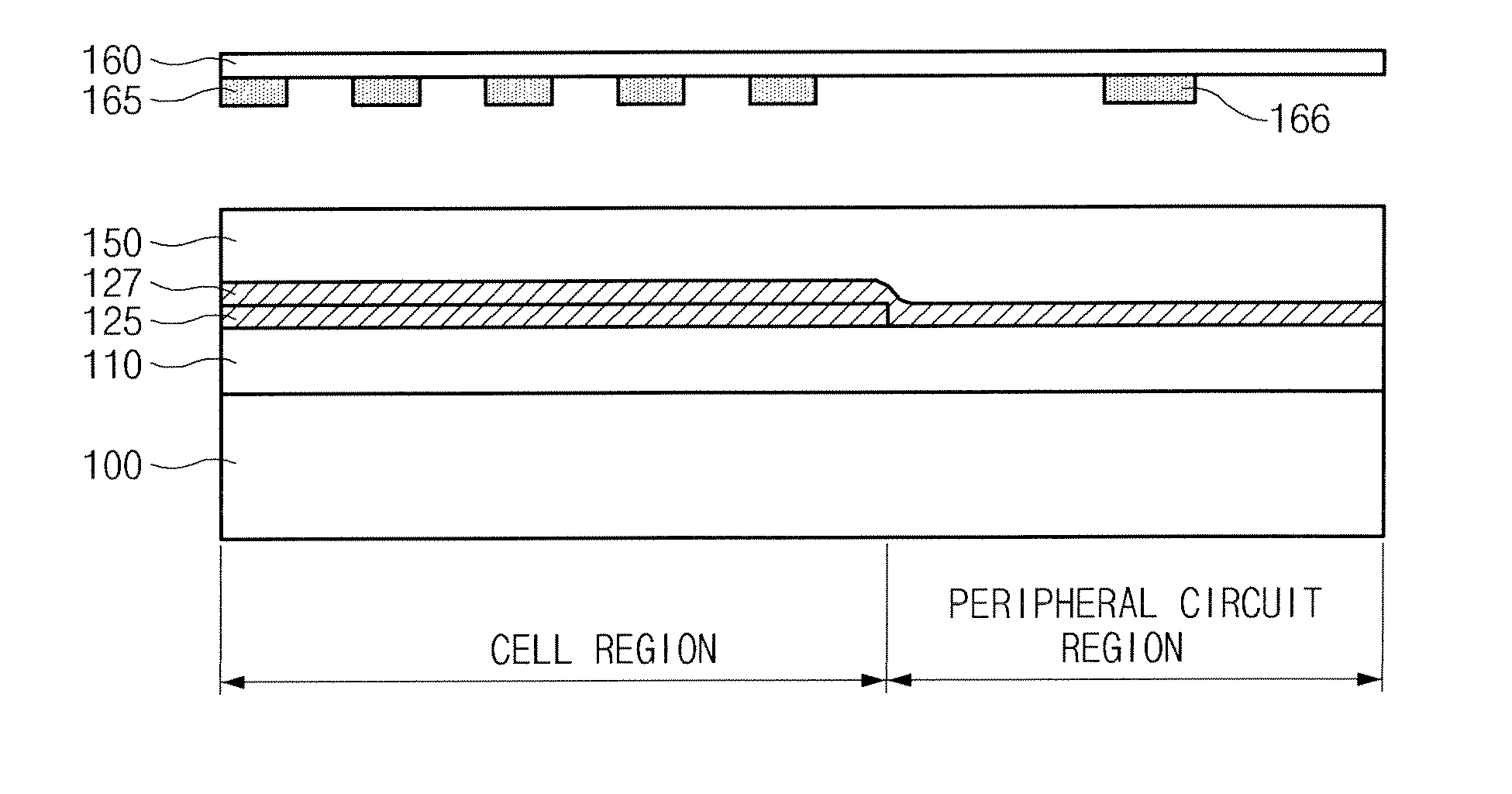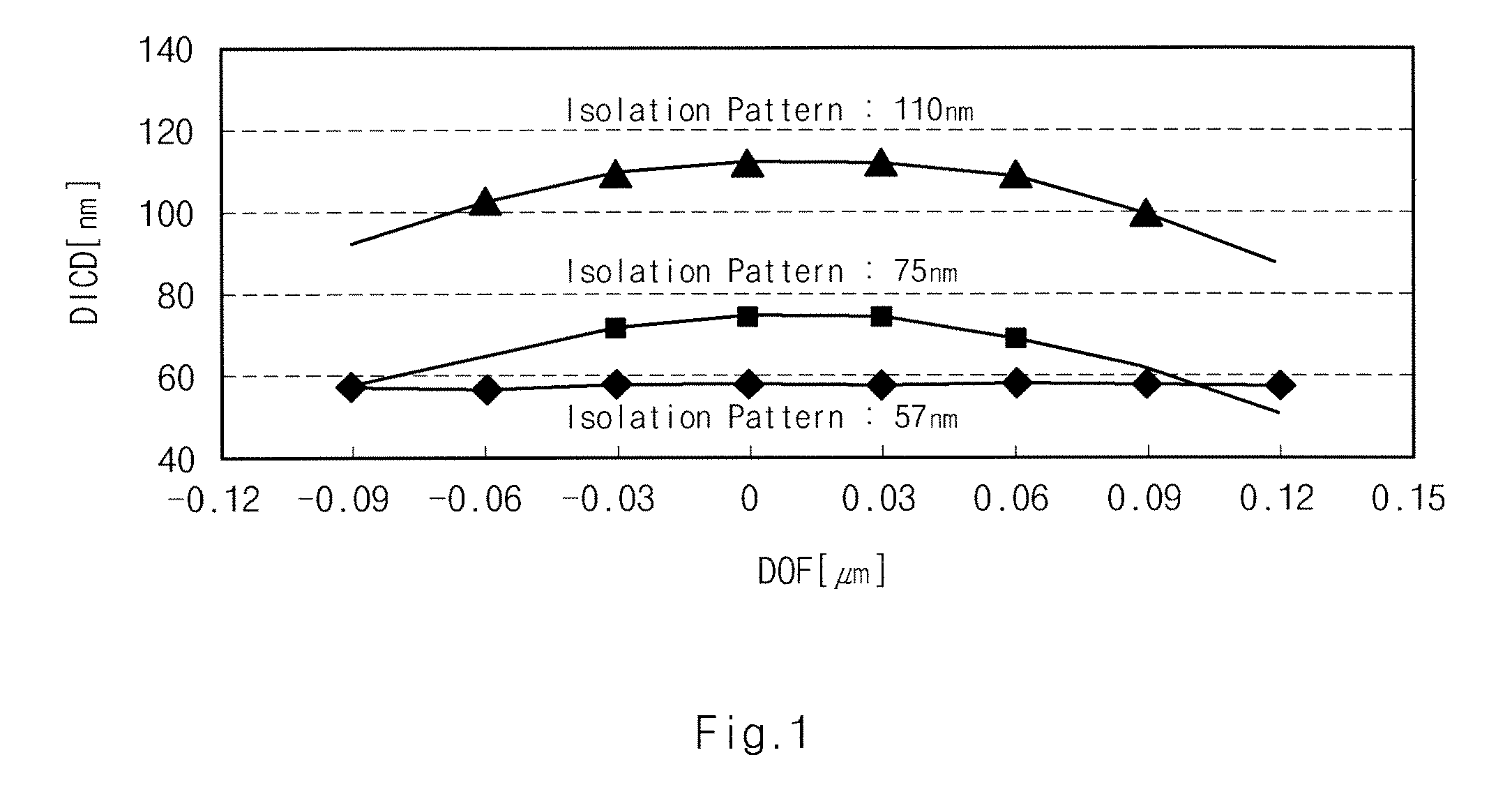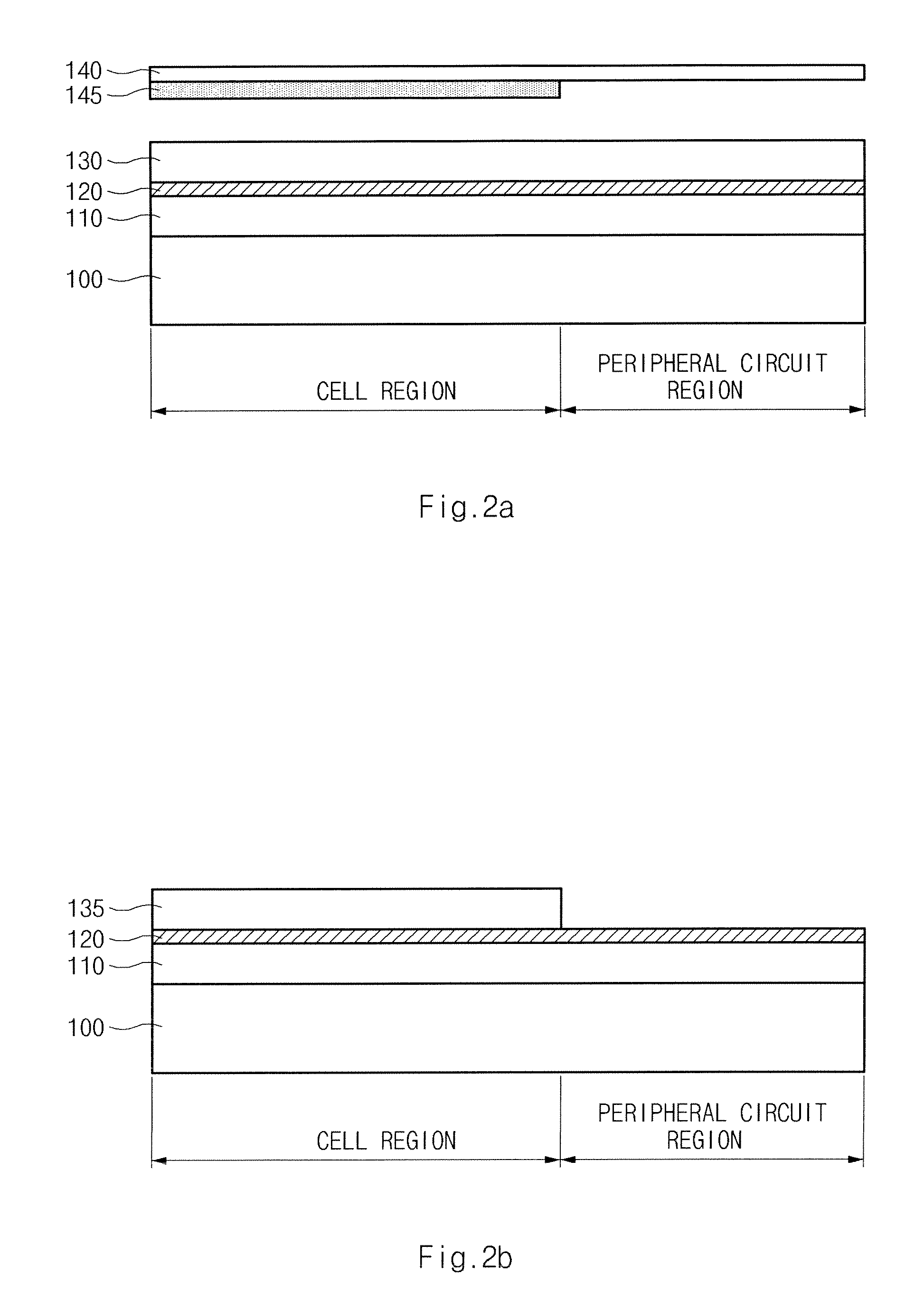Method for manufacturing a semiconductor device by selective etching
a selective etching and semiconductor technology, applied in the direction of semiconductor devices, basic electric elements, electrical appliances, etc., can solve the problem of difficult to form fine patterns in the peripheral circuit region, and achieve the effect of improving the data processing speed of the semiconductor device and increasing the efficiency of the devi
- Summary
- Abstract
- Description
- Claims
- Application Information
AI Technical Summary
Benefits of technology
Problems solved by technology
Method used
Image
Examples
Embodiment Construction
[0016]Hereinafter, the invention is described in detail with reference to the accompanying drawings so that those skilled in the art can easily carry out the invention.
[0017]FIG. 1 is a graph showing the relation between develop inspection critical dimension (DICD) and depth of focus (DOF) of a dense line with a line width of 57 nm, an isolation line pattern with a line width of 75 nm, and an isolation line pattern with a line width of 110 nm, respectively.
[0018]Referring to the graph, the isolation line pattern with a line width of 75 nm has a comparatively smaller DOF margin than that of the dense line pattern with a line width of 57 nm.
[0019]Meanwhile, the isolation line pattern with a line width of 110 nm, which is relatively larger than the dense line pattern with a line width of 57 nm, exhibits an improved DOF margin compared to the isolation line pattern with a line width of 75 nm.
[0020]As mentioned earlier, to ensure a DOF margin of an isolation pattern formed in a periphera...
PUM
 Login to view more
Login to view more Abstract
Description
Claims
Application Information
 Login to view more
Login to view more - R&D Engineer
- R&D Manager
- IP Professional
- Industry Leading Data Capabilities
- Powerful AI technology
- Patent DNA Extraction
Browse by: Latest US Patents, China's latest patents, Technical Efficacy Thesaurus, Application Domain, Technology Topic.
© 2024 PatSnap. All rights reserved.Legal|Privacy policy|Modern Slavery Act Transparency Statement|Sitemap



